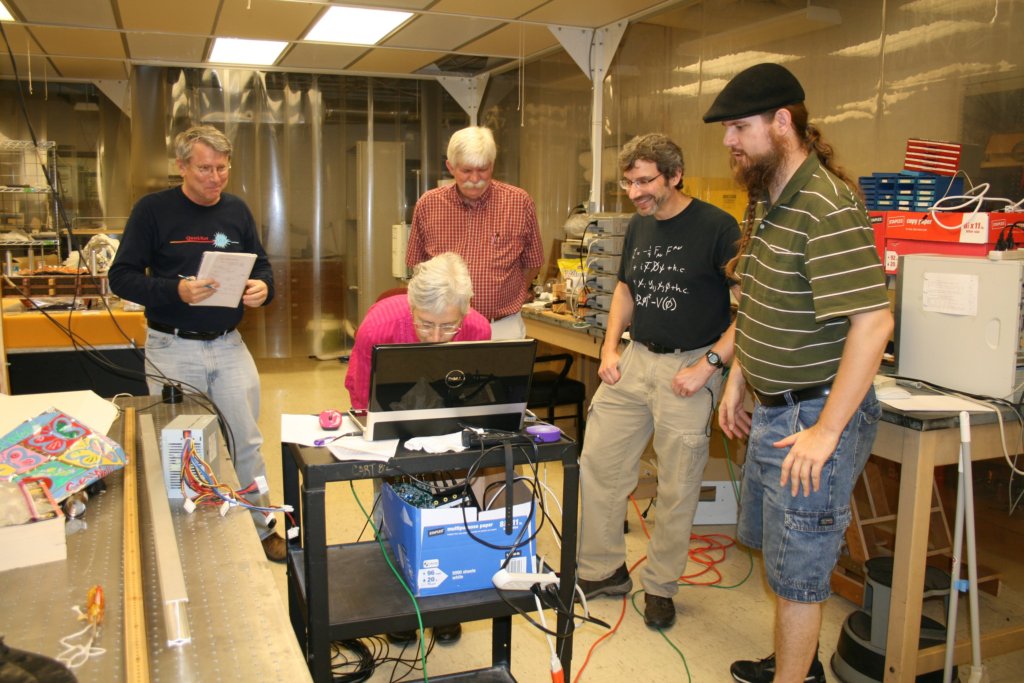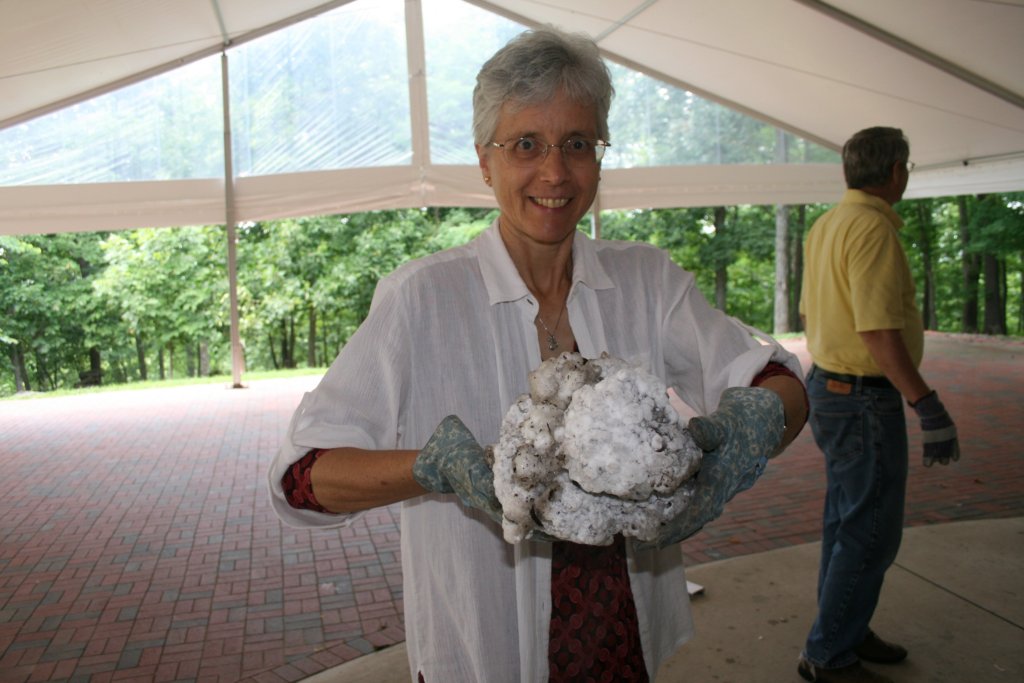2014 Annual Report - Vanderbilt University
The Vanderbilt group is in the 12th year of managing and organizing, as well as mentoring teachers for the middle Tennessee QuarkNet program. The effort started with Robert Panvini, was put on a firm footing with the leadership of Med Webster, and recently continues with Bill Gabella as the main organizer and mentor.
The Vanderbilt QuarkNet program has about a dozen teachers that routinely attend the QuarkNet week during the summer, or "checkout" the cosmic ray muon detectors during the school year. They comprise various levels of hardware expertise and many lack familiarity with the Cosmic Ray e-Lab functionality of the program. This motivated the invitation for Bob Peterson to visit and give a refresher on the e-Lab this year. The Vanderbilt program presently oversees two cosmic ray muon detectors (CRMDs) permanently being installed in local high schools, and three others for teachers to checkout for part of the academic year. A sixth CRMD exists but has non-standard sized scintillators that is sometimes used for very specific muon studies/demonstrations.
In 2014, Gabella was the principal QuarkNet Mentor though still well aided and supported by Webster. If there was a theme, it was QuarkNet's Cosmic Ray e-Lab, the online facility to store, analyze, and compare the data from the muon detectors. This central repository has data from a great many QuarkNet high schools both in the U.S. and around the world. The Vanderbilt QuarkNet teachers are great at using the CRMDs in the classroom but are less facile with the Cosmic Ray e-lab. To this end, Robert Peterson, once a high school physics teacher now become a QuarkNet teacher coach, visited Vanderbilt for two days to specifically work with the teachers on the e-Lab. The effort finished with teachers creating online presentations about their studies---just as their students would do in a teaching situation. Dr. Ken Cecire, the PI for the QuarkNet program, also visited during the first half of the week. He shared with the teachers the breadth of the current program.
There were excellent talks on CMS status and update plans by Johns, on CMS physics status by Delannoy, and Jennifer Piscionere gave an excellent talk on the controversial Bicep2 result claiming observation of gravity waves from the Big Bang. This nicely tied into the 2012 QuarkNet theme of gravity waves. Gabella talked about the LHC and its upgrades, while Webster discussed the history of measuring the speed-of-light. That afternoon the speed-of-muons was measured using the CRMDs. This helped prepare the teachers for Peterson's lessons on using the e-Lab with the data.

Though budgetary restrictions inhibited a distant trip, the group did visit several local, middle Tennessee venues that might be useful for the teachers to use for both school trips and for possible collaboration on projects for their students. The QuarkNet group spent a full day at the Vanderbilt Dyer Observatory, now an outreach and education facility with an emphasis on astronomy. Dr. Billy Teets and Bob Schweikert gave excellent tours and demonstrations. The teachers made dirty snowball comets, saw a variety of sun dials, visited the artistic camera obscura, saw by eye and by camera live images of a very active sun. Besides the scientific edification, the QuarkNet teachers learned of many opportunities for visits and science activities.

The QuarkNet team also spent a half-day visiting the outreach and education center at the Arnold Engineering and Development Center near Tullahoma, TN. Hosted by Jere Matty, he showed us the array of activities they host, including different levels of robotics, the use of instrumented, small wind tunnels, and many classroom activities. The week finished at the University of Tullahoma Space Institute, where Dr. Bill Hofmeister gave us a tour of the Center for Laser Applications, and a discussion and demonstration of the phase change of water as the air is removed from a vacuum chamber.
There are a dozen active QuarkNet teachers and in any given summer there may be 5-8 that can attend Vanderbilt's QuarkNet week. A relationship with all the teachers continues during the school year, and many of the QuarkNet teachers have been active for years in the program.
In 2013, two of our teachers attended a data analysis program at FNAL. This involved looking at, analyzing, data from the detectors. It was a forerunner of the 2014 ``Data Camp.''
In 2014, one of our teachers Meaghan Berry attended ``Data Camp'' at FNAL and though unable to attend the Vanderbilt program, returned with great enthusiasm and interest. She became the first teacher to checkout a detector for the 2014 academic year.
Middle School Internship Day
Webster and Gabella also host up to four eighth graders each February. This is a middle school internship/career day program, and the students must have expressed an interesting in particle physics or nuclear physics. The Vanderbilt team has received great reviews from the students and the school, as of 2014 having hosted students for 5 years. Webster and Gabella use the QuarkNet muon detectors in a configuration as a telescope, with one pair on the 10th floor and the other pair on the 8th floor, in a stairwell. With three-fold coincidence, the telescope measures the rate and timing of muon hits. With the long baseline and a systematic correction of swapping one of the upper detectors with a lower one, measurements of the muon speed, essentially the speed-of-light, can be better than 3\%.
For the students, they arrive and immediately handle the hardware setting up the first data collection. For that hour, rates are low because of the long baseline, the students hear friendly, somewhat informal, discussions of cosmic rays, muons, and the detector hardware. Webster discusses the history of the speed-of-light measurement, and the need for the swapping an upper scintillator with a lower detector to cancel the systematic delays in the signal from the cabling and electronics. Gabella discusses the analysis of the timing data using Google Docs spreadsheets. Students, who are only somewhat familar with spreadsheets from their school, learn to look for outliers by hand, to set up histograms to find outliers and averages, and to make plots.
Gabella and Webster's goal is for the students to handle hardware, and not be intimidated by it or careless, to run the DAQ computer program, and finally to analyze the data.
